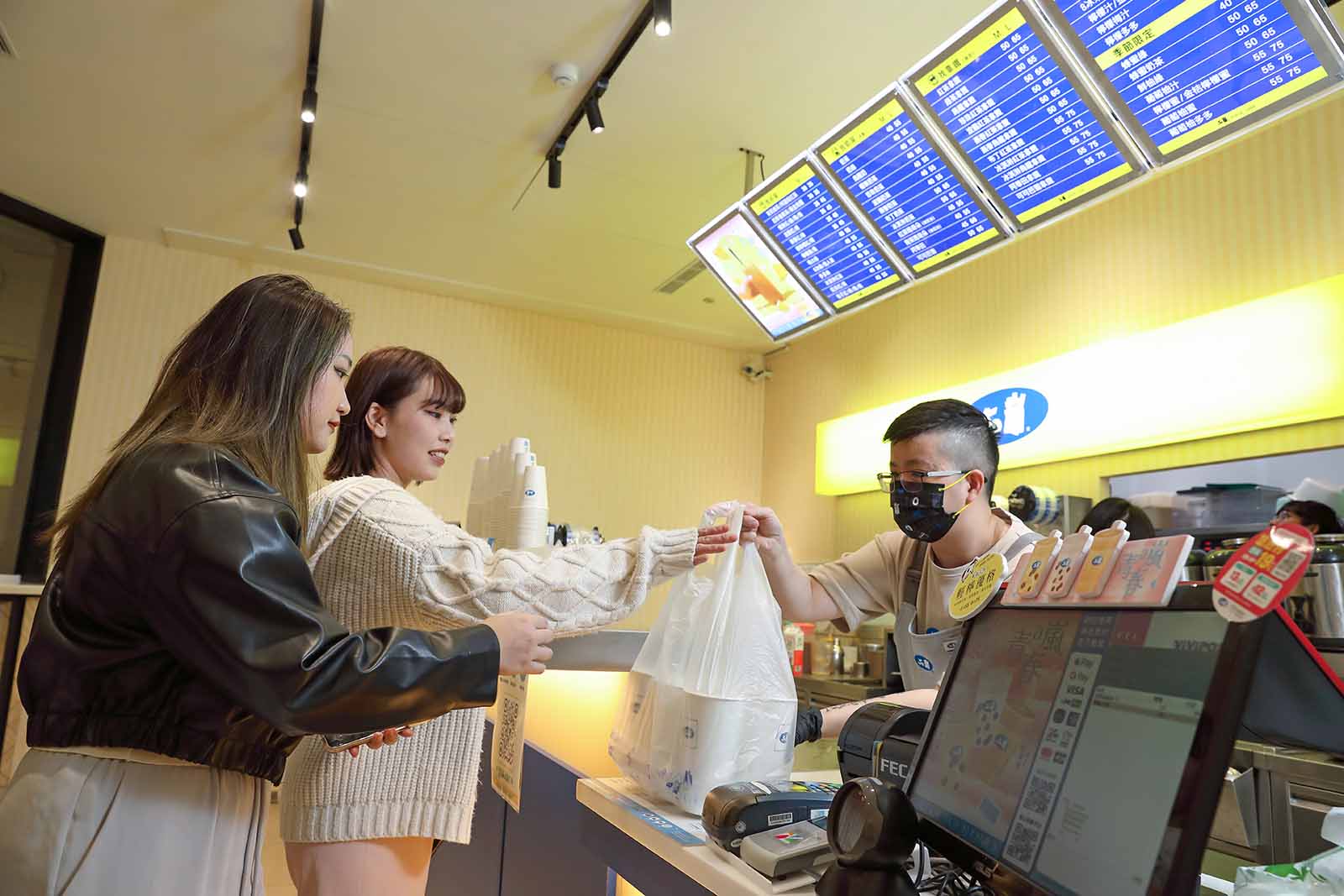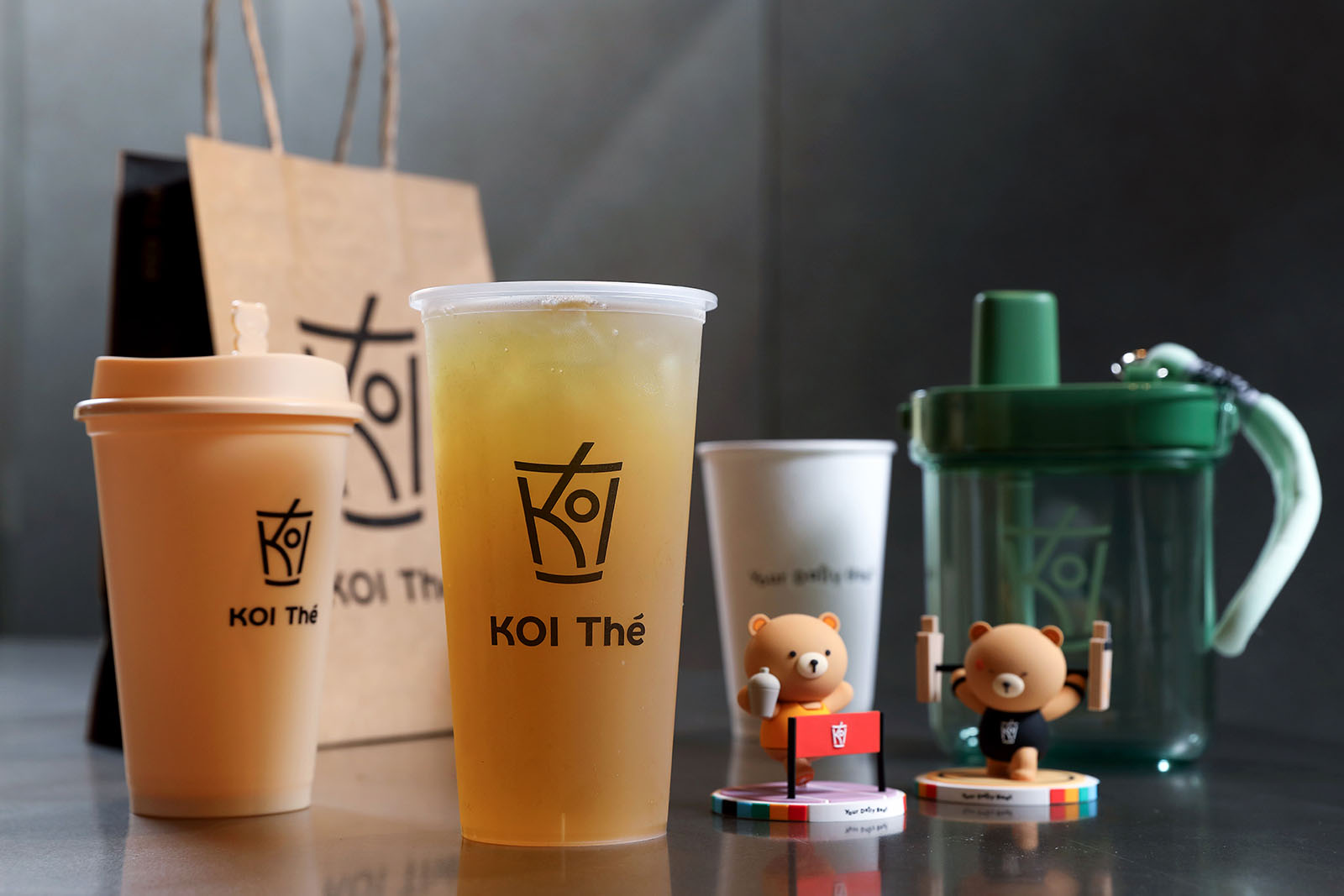The 30-Year Journey of KOI Thé, Taiwan's Bubble Tea Leader

Source:Chien-Tong Wang
Taiwan, the birthplace of bubble tea, consumes 1.1 billion cups of beverages annually. Despite being in the market for 30 years since its establishment in 1994, why is 50 Lan, KOI Thé’s parent company, still the favorite among consumers?
Views
The 30-Year Journey of KOI Thé, Taiwan's Bubble Tea Leader
By Ashley Loweb only
Taiwanese people consume 1.1 billion cups of tea beverages annually. According to "DailyView Internet Temperature Gauge," the most discussed bubble tea brand in Taiwan in 2023 was surprisingly 50 Lan, which has been in the market for 30 years. Its "consistent quality" has garnered unanimous praise from netizens.
According to data monitoring company LnData, among 61 bubble tea brands in Taiwan, 50 Lan accounted for 24.3% of the invoices in the first three quarters of 2023, firmly holding the top position and being the most preferred brand across all age groups throughout the year.
Originating from Tainan, Creating Value with Tea
30 years ago, Ma Shao-wei, a graduate of Tamkang University's Aerospace Engineering Department, returned to his hometown in Tainan after completing his military service and opened a juice shop next to his mother's fried chicken stand. However, due to difficulties in controlling fresh fruit and other raw materials and the cumbersome process of making drinks, Ma decided to switch to selling tea-based beverages. In 1997, the first 50 Lan store opened in Tainan.
Ma Shao-wei, who prefers a low profile and advocates for natural flavors, firmly believes that pure tea is better than milk tea, emphasizing the importance of preparing the tea base properly. In establishing 50 Lan, he conducted serious research on tea leaves and personally collaborated with tea farmers and tea makers to develop 50 Lan's four major tea base formulas: Red, Green, Clear, and Oolong.
At that time, the Taiwanese beverage industry generally used ground tea, tea powder, and concentrated juice for preparation, but 50 Lan stood out by using tea leaves. Despite having a price twice as high as others, it steadily built a good reputation.
 50 Lan is the most popular boba shop brand in Taiwan. (Photo: Chien-Tong Wang)
50 Lan is the most popular boba shop brand in Taiwan. (Photo: Chien-Tong Wang)
In 2000, Ma Shao-wei's army comrade Guo Zong-feng acquired the regional agency rights for the Gao Ping area, bringing the popular Tainan bubble tea brand to other counties and cities.
Ma Shao-wei, known for his low-key personality, expanded the business to get married and start a family. 50 Lan outlets in Tainan were commonly located in alleys. In Kaohsiung, Guo Zong-feng and his wife chose roadsides without islands, with slow traffic and good parking, quickly establishing brand visibility.
Subsequently, Ma Shao-wei's younger sister, Ma Ya-fen, and college classmate also joined the agency ranks, pioneering in the central, northern, and northern metropolitan areas. 50 Lan's four regional branches in Taiwan developed independently, each reporting to the Tainan headquarters.
With 612 50 Lan branches nationwide, Ma Ya-fen, nicknamed "Sister Ma," managed 44% of the central region stores, making it not only the largest in the region but also covering the primary battleground of tea drinks in Taichung. In 2006, she created the KOI The brand, expanded overseas with 586 stores, and achieved an annual revenue exceeding NT$6 billion.
Why has 50 Lan maintained its appeal for many years and expanded overseas?
"High-quality materials and stable personnel can provide customers with a sense of security," said Ma Ya-fen, simplifying the key to success, a practice that few people follow.
While her brother brewed tea and her mother sold fried chicken, Ma Ya-fen, fresh out of Tamkang University's French Department, initially worked at the Westin Taipei Hotel and later as a cashier and front desk staff at the EVA Air Evergreen Plaza Hotel in Taichung.
In 2002, seeing the rapid development of 50 Lan in the Kaohsiung area, Ma Ya-fen proposed expanding 50 Lan to Taichung to Ma Shao-wei. "He said it's a top-tier battleground," she recalls, having tasted teas from famous shops in Taichung but finding none as delicious as 50 Lan's.
She returned to Tainan and started from the front line, standing from 7 a.m. to 10 p.m. to learn tea brewing. In Taichung, Ma Ya-fen learned from scratch, studying "Grinding It Out: The Making of McDonald's" by Ray Kroc, compiling the Standard Operating Procedures (SOPs) provided by her brother into a booklet, and designing sweetness levels and ice amounts for 50 Lan, learning how to run a store independently.
In 2002, the first ten openings for 50 Lan in Taichung were not publicized. Ma Ya-fen quietly placed application forms on the counter, believing that those who are genuinely interested will find them. She applied the standards of selecting franchisees similarly to how EVA Air selects cabin crew members: university graduates under 30 without work experience, starting from scratch.
Prospective franchisees had to work in the kitchen for three days before finding a location. If they insisted too much on their chosen location, they would be rejected. When employees of franchised stores wanted to open their own shops, Ma Ya-fen also insisted on having the endorsement of the franchisee to ensure their rights. "Securing the rights of franchisees first," she thoughtfully added, "Employees will work hard to get the endorsement."
In 2004, the central region's 28 50 Lan stores stopped accepting new franchisees, only opening directly-operated stores or allowing existing franchisees to expand.
Today, the central region's 101 franchisees of 50 Lan are mostly from the first two batches or recommended employees from various stores, maintaining a relationship with the headquarters for at least ten years. The 50 Lan headquarters does not collect franchise fees but only charges for the raw materials purchased by franchisees. "They want all stores to make money and operate sustainably," remarked an owner of a raw material factory.
 (Photo: Chien-Tong Wang)
(Photo: Chien-Tong Wang)
Stable Raw Materials and Menus
50 Lan is very cautious about procurement and sticks to selected suppliers. A supplier who has cooperated with the northern region for six years mentioned that while competitors buy equipment after just one or two months of trial, 50 Lan sends equipment to the headquarters and then to the branches for a year of testing before approval. They do not easily change suppliers even if the cost is cheaper, a rarity in the bubble tea industry.
For 30 years, all tea leaves at 50 Lan stores nationwide come from the Tainan headquarters, while other ingredients like pearls and fruits are ordered by each region according to the approved brand standards.
"Good tea never gets boring," Ma Ya-fen remarked. "By letting customers develop habits, they will eventually return to 50 Lan." Looking at the performance in the central region, pure tea accounts for 40% of 50 Lan's sales.
Limited New Product Launches, Streamlined SOPs
Ma Shao-wei, who primarily operates in Tainan, has a cautious approach, leading 50 Lan to rarely introduce new products.
The menu at 50 Lan remains unchanged, contributing to consistent quality. Li Chong-zhen, Deputy General Manager of the Hexagon International Innovation and Digital Center, noted that 50 Lan's menu includes about 40 items, which is 10 to 20 items fewer than many competitors. "Customization is essential in the bubble tea industry; even a slight change in sweetness or ice level creates a new SOP," she analyzed. Therefore, having a smaller menu and infrequent new product launches means employees have to memorize fewer new SOPs, reducing distractions.
She likened bubble tea making to cocktail crafting, requiring craftsmanship that customers can appreciate. Zhu Qing-hui, General Manager of the central region at 50 Lan, revealed that the tea bars in their stores are located close to customers, with lowered counters, allowing customers to witness the tea-making process directly from ordering to serving in 3 to 5 minutes.
As a result, while competitors have switched to using machines to measure sugar, 50 Lan insists on employees hand-pulling sugar, using a long spoon to precisely "pull" a specific amount of syrup based on feel alone.
Ma Ya-fen, who started from the front lines, said that new employees need to practice pulling sugar for at least a week, and many find it too difficult and quit. However, 50 Lan remains committed to this traditional method.
Expanding Overseas with KOI
Conquering Taiwanese taste buds, 50 Lan ventured overseas early.
In 2006, with the central region's operations on track, Ma Ya-fen, seeking new challenges, decided to create her brand, KOI.
While her brother remained dedicated to Taiwan, Ma Ya-fen delegated the overseas expansion of 50 Lan to KOI. She chose Singapore as the first overseas location due to its safety, cultural similarities, and launched the first KOI store in November 2007 in a non-touristy area, initially facing slow business until even the nearby donut shop owner came to check on her.
Believing that good drinks would naturally attract customers, KOI still sources tea leaves from the Tainan headquarters but is independently managed by Ma Ya-fen. She positioned KOI as a mid- to high-priced brand, with a cup of pearl milk tea priced at NT$100 in Singapore, reflecting the higher operating costs.
After establishing a strong presence in Singapore, Ma Ya-fen explored collaborations with other countries. She analyzed that in Southeast Asia, many young people consider bubble tea a luxury item and would opt for it even if it meant skipping a meal.
She expanded KOI to China, Cambodia, Indonesia, Vietnam, Thailand, and Malaysia, focusing on upscale locations and pricing similar to Starbucks. Many stores also offer seating areas, featuring exquisite designs akin to Instagrammable spots.
KOI replicated 50 Lan's strong foundation, with most country operations managed by former frontline members of 50 Lan. While there are differences due to local regulations, all are directly operated.
"After trying five brands, KOI has the best taste and cleanest stores. Its stability matches 50 Lan, but KOI adds a touch of sophistication," shared Li Pei-fen, who recently returned from Vietnam, with "CommonWealth" magazine.
KOI's menu also includes "vibrant" options, with basic pearl milk tea and other standard items making up 70%, while the remaining 30% is open for local teams to develop creative flavors, resulting in unique offerings like Malacca coconut sugar milk tea in Malaysia, peanut embryo milk tea in Singapore, citrus tea in Japan, and Ribena blackcurrant juice in Singapore.
"KOI is the dominant mid- to high-priced bubble tea brand in Southeast Asia," noted Lin Dong-xin, "Consumers buy because of KOI's brand appeal. It has a strong brand presence." Consumers may not even recall the names of other brands.
 KOI. (Photo: Chien-Tong Wang)
KOI. (Photo: Chien-Tong Wang)
Taking 50 Lan Worldwide
Looking ahead, Ma Ya-fen believes that 50 Lan's 600 stores still have room for growth, considering KOI her pride and joy. This year, she plans to expand KOI to Laos, Canada, India, and France, eventually aiming for a global presence.
However, a veteran manager in the bubble tea industry expressed concerns about 50 Lan's limited new product launches, potentially leading to an aging customer base. With Chinese bubble tea brands aggressively expanding globally in recent years, competition has intensified. As pearl milk tea becomes more widespread, consumers no longer view it as a luxury item, posing a challenge for KOI to maintain its competitive edge.
In conclusion, 50 Lan's success story spanning 30 years and KOI's overseas expansion demonstrate Taiwan's prowess in the bubble tea industry, facing challenges of evolving consumer preferences and intense competition in the global market.
Have you read?
- How Taiwanese Foods Conquer the American Market
- Chatime Takes Taiwanese Bubble Tea to Epic Success Overseas
- How Taiwanese bubble tea brand continues global expansion during the pandemic
Uploaded by Ian Huang






